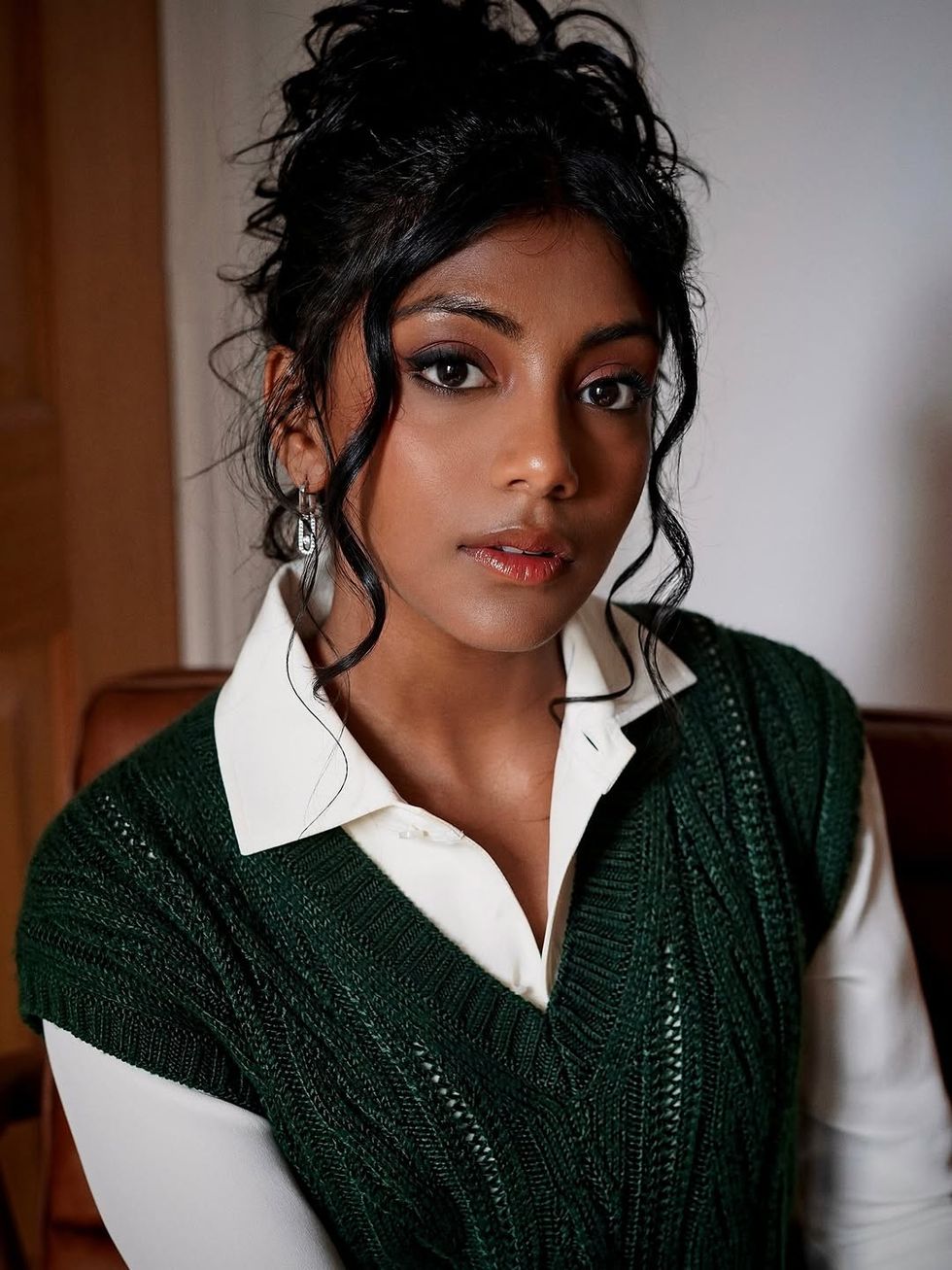A COMPLETE GUIDE TO ALL THE WAYS IN WHICH BOLLYWOOD HAS EXPLORED REBIRTH IN CINEMA
by ASJAD NAZIR
WITH the Covid-19 lockdown slowly coming to an end, most people around the world will be starting again and those who have defeated the killer disease will feel like they are having a rebirth.
Luckily, Bollywood has been exploring the theme of reincarnation in interesting ways across the decades with stories from different genres, which have expanded the horizons of commercial Indian cinema. This has resulted in timeless classics and may provide some sort of inspiration for those who feel like they are starting all over again.
So that is why Eastern Eye decided now was a good a time as any to present an all you need to know A to Z of reincarnation in Bollywood.
A is for Aayega Aanewala: India’s first major reincarnation movie hit Mahal (1949) featured record-breaking song Aayega Aanewala, which was the first big step towards turning Lata Mangeshkar into the greatest singing star in India. Aayega Aanewala was the most successful song ever at the time and was used cleverly in the plot to reconnect those supposedly separated. This would inspire other films to do the same.
B is for Buzzing: Although 2012 release Eega is a South Indian film, a Bollywood version dubbed in Hindi titled Makkhi was released. Perhaps the most unique reincarnation film, it revolves around a deceased man returning as a fly out to avenge his own murder.
C is for Chandni Chowk To China: The big budget 2009 release wasn’t great, but it was unique in the fact that it revolves around a Delhi-based vegetable cutter who is tricked into thinking he is the reincarnation of a Chinese war hero.
D is for Dangerous Ishhq: The 2012 film attempted something different with the genre. It told the tale of the same two lovers in four different time periods, who keep getting separated by the antagonist and how they finally try breaking the deadly cycle. Although the theme was unique, the only decent thing about the movie was the marvellous music.
E is for Ek Paheli Leela: The Bollywood reincarnation genre got a little steamy for the first time in 2015 with former adult film star Sunny Leone playing the lead role in the story of two lovers separated and reconnected in a later life.
F is for Future: The one thing pretty much all reincarnation dramas in Bollywood have in common is that the protagonists from past lives return to modern day, but 2008 science fiction film Love Story 2050 attempted something different. The hero finds his murdered lover reborn when he hops in a time machine and travels to the future.
G is for Ghost: A popular element in Bollywood reincarnation dramas has been the presence of a ghost and most have been restless spirits looking for some type of closure. In Madhumati and Om Shanti Om, the ghost returns to exact revenge, but in Neel Kamal it is a heartbroken man looking to reconnect with a lost love who has returned in human form.
H is for Hamesha: Another common staple of the Bollywood reincarnation drama is the antagonist staying alive after he has murdered the protagonists. That is exactly what happens in 1997 drama Hamesha where the villain kills a love rival and sees the object of his affection commit suicide, then many years later he encounters the reincarnated versions of them. A similar thing happens in Karan Arjun, where two protagonists are reborn to exact revenge on the villain. The villain also remains in alive in films, including Om Shanti Om and Karz.
I is for Immortal love: The connecting factor of all romantic reincarnation dramas is immortal love and two people destined to be together, reuniting after being reborn. Whether it is unrequited love, a romantic reunion or one protagonist needing closure, the common thread is an eternal love across the ages.
J is for Janam Janam: In Bollywood a protagonist who is unaware of a previous life usually finds out after visiting a certain location, which will usually trigger memories from the past and this has occurred in many films. In 1988 drama Janam Janam, an architect takes shelter in a mansion during a journey to a distant town and while there starts recollecting a past life.
K is for Karz: The 1980 cult classic is widely regarded as one of the all time greatest reincarnation films. Apart from the story that ticked all the boxes of the genre, the film is remembered for the music, moments and song titles that would go onto inspire other movies. It also resulted in a rubbish 2008 remake starring Himesh Reshammiya, but we won’t talk about that.
L is for Love: The most common subject in a Bollywood reincarnation film is love, which usually involves the two soul mates being separated and then being reunited after they are reborn. Most times, both will take human form and on other occasions, like in 1968 film Neel Kamal, one will reappear as a ghost looking for closure.
M is Madhumati: The greatest Bollywood reincarnation film is the classic starring Dilip Kumar, Vyjayanthimala and Pran. The highest grossing Bollywood film of 1958, Madhumati won a record-breaking number of Filmfare Awards and inspired pretty much every film that followed in the genre in some way, which included the climax of smash hit 2007 release Om Shanti Om. There are also scenes, camera angles, characters and plot elements that reappeared in films from diverse genres.
N is for Night: Whether it is stumbling on to a past life or being contacted by a ghost in some way, the spooky elements of the genre not surprisingly occur in the night in most of the films. This has not only added atmosphere, but also been used as an element to trigger memories.
O is for Om Shanti Om: The highest grossing Bollywood film of 2007 showed the reincarnation genre was alive and well. The smash hit movie that introduced Bollywood audiences to current queen Deepika Padukone took elements from diverse dramas in the same genre from the past and repackaged it for a modern day audience, which included a song with a record-breaking number of star cameos.
P is for Portrait: One way a protagonist finds out about a previous life is stumbling on to a painting in a mansion of themselves. The painting will then subsequently trigger memories from a past life as was the case for 1976 film Mehbooba and many other movies.
Q is for Quest: Every reincarnation drama is essentially about the completion of a journey that was interrupted in one life. There will either be lovers reuniting, a soul being set free, revenge or some kind of justice, so there will be a beginning in one life and an end in the next.
R is for Revenge: The second most common theme in reincarnation dramas after love is vengeance. That revenge will usually revolve around the person being murdered being reborn to seek revenge. In popular 1995 film Karan Arjun, two slain brothers are reborn to exact revenge on the bad guy.
S is for Songs: The main element of songs in a movie has been to provide entertainment, but in most reincarnation movies songs have been used as trigger to remember a past life, which has included films like Karz, Neel Kamal, Mehbooba, Mahal and so many more.
T is for Trigger: Every film in the genre has some sort of trigger that reawakens memories from a past life and songs have been the most popular, but there have been others. Two interesting ones were a fear of fire in Om Shanti Om and a riverboat ride in 1967 romantic drama Milan.
U is for Urumeen: One of the ways Bollywood has had access to reincarnation dramas is Hindi dubbed versions of South Indian films. Hit 2015 Tamil film Urumeen was set across three generations and released in Hindi in 2018 as Hindustani Jaanbaaz. Most successful Bollywood reincarnation dramas have been dubbed into regional languages or inspired remakes.
V is for Visions: Quite often memories from a past life will result in a protagonist having hallucinations and flashes from a past life, which were included in 1995 romantic drama Prem.
W is for Woman: In 2005 comedy Mr Ya Miss, they decided to do things a little differently by having a womaniser learn important life lessons when he is reincarnated as a lady and slowly learns the error of his ways.
X is for X Factor: One of the main commercial appeals of the genre has been getting popular stars to play more than one role, which meant film fans got a double dose of their favourite star.
Y is for Yuga Purusha: The popularity of 1980 film Karz was such that it was remade in the Kannada language as Yuga Purusha. The regional Indian language 1989 musical was a blockbuster hit at the box office.
Z is for Zakir: In 2017 drama Raabta, Zakir is the main villain and commits a murder that separates two lovers and then he, along with the protagonists, gets reborn centuries later to relive a similar scenario. Like all the antagonists, he commits the heinous act that connects the story to the rebirth.















 Charithra Chandran styled her hair in soft curls for the Ralph Lauren outfitInstagram/
Charithra Chandran styled her hair in soft curls for the Ralph Lauren outfitInstagram/ Charithra’s look was inspired by her character Edwina Sharma from BridgertonInstagram/
Charithra’s look was inspired by her character Edwina Sharma from BridgertonInstagram/

